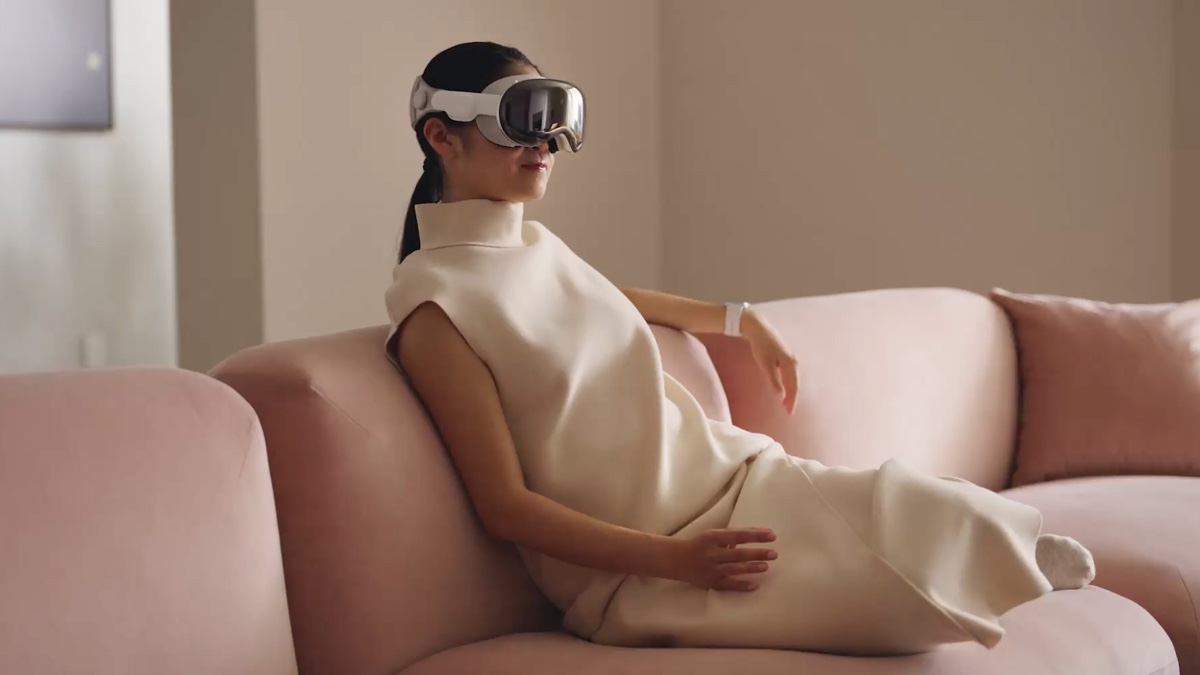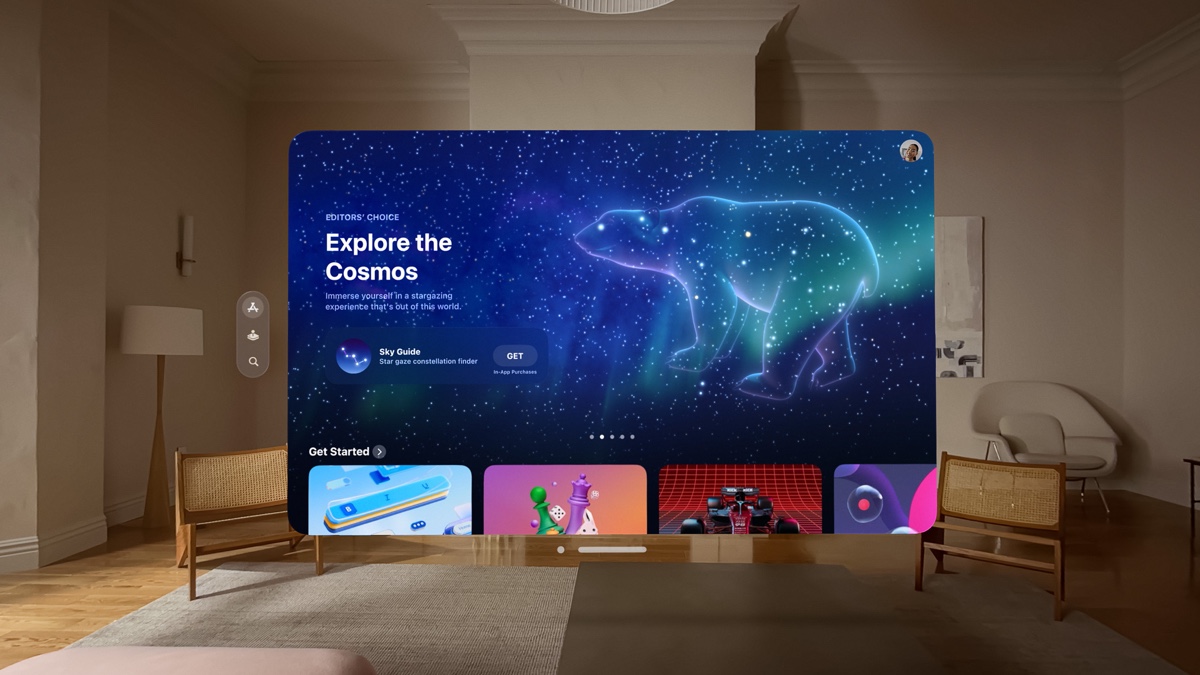
The waiting is over, the reviews are in, and Apple will finally launch the Vision Pro headset on 2 February.
Announcing the device last June, Tim Cook described the Vision Pro as the beginning of a journey in which Apple will take us to a truly augmented reality future.
As we've seen from countless videos and demos, though, there’s still a very long way to go before we arrive at this utopia.
Apple bills the Vision Pro as a v1 product – and while the company has done its best to assuage the obvious criticisms about what this product is for or who might want it – there are still plenty of questions.
And then there’s the price tag. It will cost $3,499 – making it all but a toy for developers and the worst people in your office.
Below, we'll be providing an overview of everything related to Vision Pro for those who are only tapping into reality upon the headset's release.
Price and global availability
Apple appears to have enjoyed a successful pre-order period for Vision Pro, with reports suggesting it has already secured over 200,000 sales heading into the 2 February launch day.
Unfortunately, it will only be available in the US for now - and we still don't have any word on when the Vision Pro will ship to the UK, Europe, or beyond.
As we just mentioned, we do know the US pricing to start at $3,499 (with different storage options costing more), and this equates to around £2,750 / €3,250.
Current rumors suggest that a global rollout will occur around the summer - providing everything goes smoothly with the US launch - but we'll update this section when we have official confirmation.
What does Vision Pro look and feel like?
Apple
It looks sleek - exactly as Apple's products always do.
It also looks like a VR headset, which is exactly what it is - even if you'll almost exclusively see Apple referring to it as a "spatial computer".
Apple hasn’t changed the game here in terms of look, but early reviewers have been in unison about the fact this is an extremely heavy headset in comparison to typical options.
No matter which of the two bands you pick from - one that wraps around your head and another that mounts it a bit more on the top of your head - Vision Pro can weigh between 600 and 650g.
For reference, the 12.9-inch iPad Pro weighs around 680g.
And while other headsets may clock the scales heavier (like the Meta Quest weighing over 700g), the front-heavy design of Vision Pro is seemingly what causes strain issues after wearing it for an extended period.
When you consider that the Vision Pro also siphons off the battery to an external pack that's always plugged in, it's even more remarkable - and a big design challenge for Apple to tackle in the future.
The Vision Pro also only lasts two hours when using this battery pack and away from mains power, which is less than ideal.
Apple
So, how does the headset's design differ from options from Meta, Sony, and others?
Initially, it would appear to have been EyeSight - the feature that allows people outside of the headset to see the user's eyes.
Following first impressions, though, EyeSight doesn't appear to be as fundamental to the experience as the marketing material would have you believe.
While the user's eyes can appear to keep the user connected in still images (as shown above), reviewers have shown that they're rarely visible from the outside.
You won't be making eye contact with people when inside the headset, then.
Instead, video passthrough - enabled by a pair of high-res front cameras and joined by cameras aimed downwards to track your hands, spatial tracking cameras, a lidar scanner, and floodlights for low light - is the real core of Vision Pro, and the biggest differentiator from other headsets.
Most of the features - except ones that close you in, like movie watching - are overlaid in the real world off the back of these cameras. And latency is reportedly close to instantaneous, which, again, would mark a first in video passthrough.
Tech specs
Apple
Inside the Vision Pro, things get very high-end and Apple starts to justify that mad price tag.
The screens are dual Micro OLED panels the size of a postage stamp, wrapped in three-element custom lenses to give you a visual everywhere you look.
Those Micro OLED panels pack in 23 million pixels, and at an incredible density. There are 62 pixels crammed into the space of a single iPhone pixel, offering more than 4K for each eye.
By all accounts, the display on Vision Pro is jaw-dropping - unparalleled to anything we’ve seen to date.
There are also two chipsets at play, the M2 running alongside the all-new R1 chip. The R1 processes input from the 12 cameras, five sensors, and six microphones to power the EyeSight tracking.
Controlling with eyes, hands and voice
Apple
One of the most impressive and possibly game-changing elements of the Vision Pro is the control system.
Apple has opted against a physical controller, and everything is controlled by eye-tracking, hand gestures, and voice control.
You look at menu items to highlight them, and then you can use a pinching or grabbing gesture to select them.
Apple showed a demonstration during the initial announcement of a user looking at a search box, and then speaking the query.
It’s seriously impressive, and one can easily see how this will form the basis of wearable control in the future.
Some reviewers have grumbled about the pain point of having to look directly at things to select them correctly - and the fact your hands will always have to be visible to the downward-facing cameras to be picked up.
However, like much of Vision Pro, the basis appears to be good enough - and ripe for refinement in future generations.
What can you do with Vision Pro?
Apple
As we've said, Apple views the Vision Pro as a 'spatial computer' more than a VR or AR headset, so the easiest way to visualize the headset is that it's essentially an iPad Pro for your face.
That's quite a pertinent comparison, too, because Apple is opening iPad apps up to Vision Pro. This isn't all it seems just yet, though.
The likes of Netflix and Spotify haven't allowed their apps on Vision Pro yet (seemingly out of caution), and YouTube videos also aren't playable just yet through headset.
Still, Apple has put a focus on you being able to see some of your real-world space, so your desktop is placed over your surroundings. From there, you can use Apple apps just like you would on your desktop.
If you don’t want to see your surroundings, then Apple can show immersive landscapes (kind of like Apple TV screensavers) so you can close things off.
Apple has shown people using the Vision Pro for:
- Apps
- Work presentations and collaborative projects
- Super-intense Zoom calls
- Manipulating 3D models
- Watching content
- Listening to music via the Spatial headphones
- Playing games via Arcade
- Capturing Spatial Videos and Pictures
Apple
Apps and tons of windows can be opened simultaneously, and you can adjust the size of your field of vision.
This would appear to create a very immersive space - akin to having the world’s biggest monitor in front of you - and means you can open a bunch of Safari tabs in your living room, go to your kitchen and open some more, then return and interact with the living room tabs again.
If you open your MacBook screen and look at it while wearing Vision Pro, the whole screen will magically appear in your virtual space, and you also can resize it at your leisure.
Watching movies puts a huge movie theatre-sized screen in front of you, and the screen will dim your surroundings and accompany it with soothing light.
The company announced a series of content partnerships, including Disney+. But while it puts focus on movies and other content, we're yet to see much in the way of gaming or fitness, as was rumored pre-launch.
The 12 cameras enable users to take spatial videos and pictures, with a stunning depth of field that can be watched back on the headset.
It looks incredible, but Apple has also shown off a demo video of a man wearing the headset while playing with his kids that was so dystopian it made us want to move to the forest and reject technology altogether.
Again, this kind of thing is the essence of what we know about Vision Pro - tantalizing, industry-leading technology acting without defined borders and use cases. It's weird and wonderful at the same time, and will likely stay this way for the first few generations.
How we test
